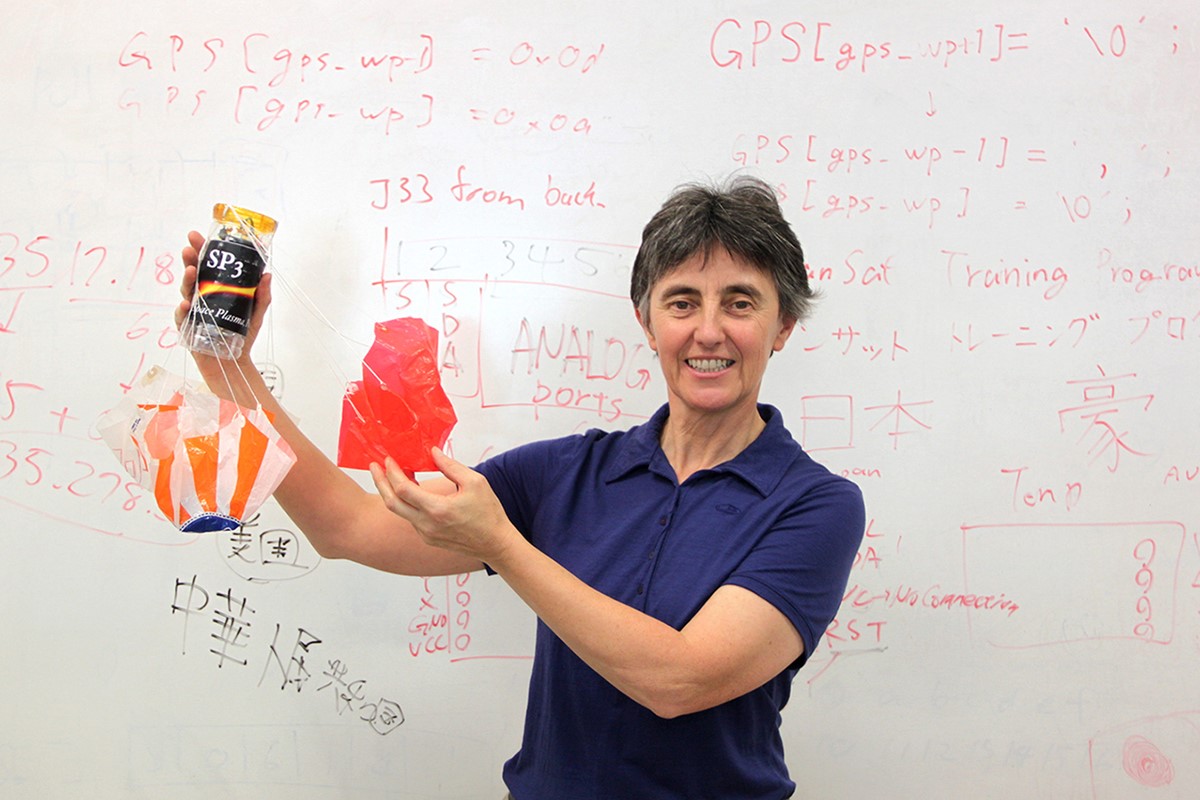One small toss for cans, one giant leap for space design
A loud group of ANU students are hurling plastic bottles from the Heavy Ion Accelerator Facility on campus. As each bottle plummets from the 40 metre-high tower, the students erupt into triumphant cheers.
You would be forgiven for calling ANU Security, but far from being mischief-makers, these students are actually just doing what their prof told them.
These plastic bottles are in fact fully-functioning satellites, and the students are conducting an experiment.
For the past week the students from Professor Christine Charles’ Space Plasma, Power and Propulsion group have worked intensively to transform their plastic can into a CanSat—a satellite in a can, or in this case, a bottle. Now complete, the students are testing the functionality of their devices.
But it’s not just all about throwing things off tall buildings. The experiment involves gathering precise sets of data. As the satellites fall to the ground, the CanSats are transmitting that data back to the students.
PhD candidate Alex Bennet has equipped a CanSat with a variety of sensors.
“We can measure the temperature, the pressure and the forces on the CanSat. Then we’ve got an onboard computer, a camera unit and a transmitter unit that can actually talk to our computer and our small ground station.”
The students have created their satellites through the CanSat Training Program (CTP), an initiative of the University Space Engineering Consortium (UNISEC) in Japan, which aims to promote practical space development activities among university students. This includes designing, manufacturing and launching small satellites and hybrid rockets.
The Japanese lecturers from Tokyo and Hokkaido Universities have been invited to the ANU Research School of Physics and Engineering by Professor Charles to collaborate with their Australian counterparts and deliver their “i-CanSat” course for the first time in Australia.
CTP provides a stepping-stone for students who want to design space-going satellites that are larger than a soft drink.
“It’s an introduction to space engineering,” says Japanese lecturer Tomoyuki Yamasaki. “After CanSat you can start making the CubeSat, then on to the micro-satellite, which actually goes into space.”
For our students it might be next stop, the moon. But first, it’s back down the stairs to collect the plastic cans from ground zero.

